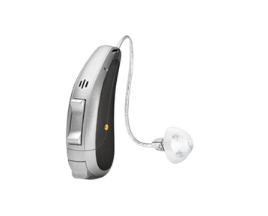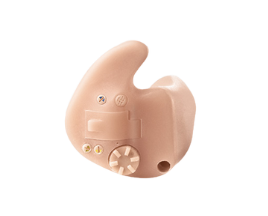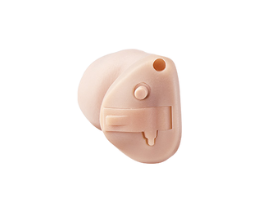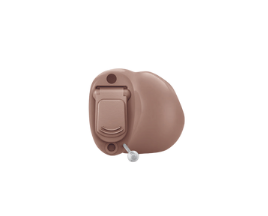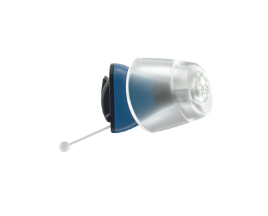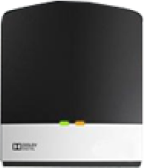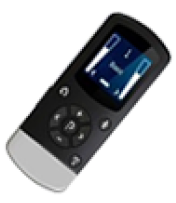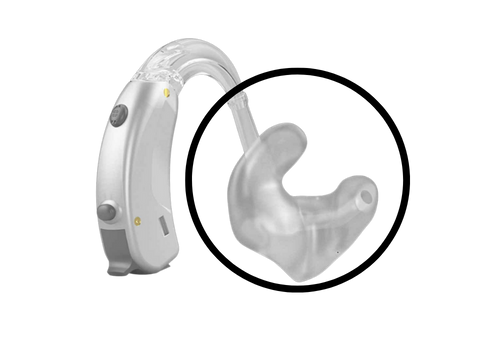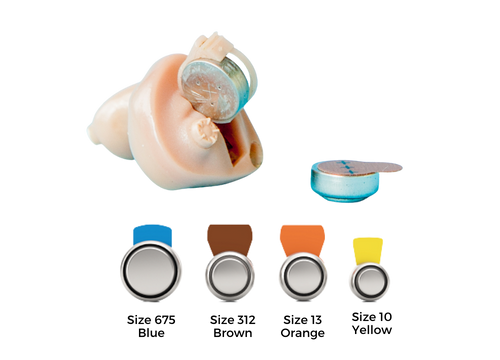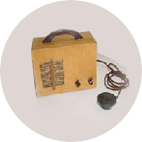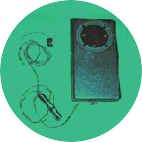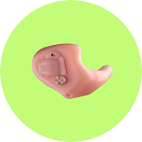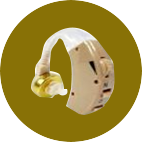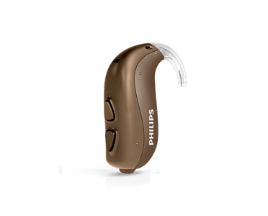Phone *
Email *
State * Andaman and Nicobar Islands Andhra Pradesh Arunachal Pradesh Assam Bihar Chandigarh Chhattisgarh Dadra and Nagar Haveli Daman and Diu Delhi Goa Gujarat Haryana Himachal Pradesh Jammu and Kashmir Jharkhand Karnataka Kerala Lakshadweep Madhya Pradesh Maharashtra Manipur Meghalaya Mizoram Nagaland Odisha Pondicherry Punjab Rajasthan Sikkim Tamil Nadu Telangana Tripura Uttar Pradesh Uttarakhand West Bengal
City * Bombuflat Garacharma Port Blair Rangat
City * Addanki Adivivaram Adoni Aganampudi Ajjaram Akividu Akkarampalle Akkayapalle Akkireddipalem Alampur Amalapuram Amudalavalasa Amur Anakapalle Anantapur Andole Atmakur Attili Avanigadda Badepalli Badvel Balapur Bandarulanka Banganapalle Bapatla Bapulapadu Belampalli Bestavaripeta Betamcherla Bhattiprolu Bhimavaram Bhimunipatnam Bobbili Bombuflat Bommuru Bugganipalle Challapalle Chandur Chatakonda Chemmumiahpet Chidiga Chilakaluripet Chimakurthy Chinagadila Chinagantyada Chinnachawk Chintalavalasa Chipurupalle Chirala Chittoor Chodavaram Choutuppal Chunchupalle Cuddapah Cumbum Darnakal Dasnapur Dauleshwaram Dharmavaram Dhone Dommara Nandyal Dowlaiswaram East Godavari Dist. Eddumailaram Edulapuram Ekambara kuppam Eluru Enikapadu Fakirtakya Farrukhnagar Gaddiannaram Gajapathinagaram Gajularega Gajuvaka Gannavaram Garacharma Garimellapadu Giddalur Godavarikhani Gopalapatnam Gopalur Gorrekunta Gudivada Gudur Guntakal Guntur Guti Hindupur Hukumpeta Ichchapuram Isnapur Jaggayyapeta Jallaram Kamanpur Jammalamadugu Jangampalli Jarjapupeta Kadiri Kaikalur Kakinada Kallur Kalyandurg Kamalapuram Kamareddi Kanapaka Kanigiri Kanithi Kankipadu Kantabamsuguda Kanuru Karnul Katheru Kavali Kazipet Khanapuram Haveli Kodar Kollapur Kondapalem Kondapalle Kondukur Kosgi Kothavalasa Kottapalli Kovur Kovurpalle Kovvur Krishna Kuppam Kurmannapalem Kurnool Lakshettipet Lalbahadur Nagar Machavaram Macherla Machilipatnam Madanapalle Madaram Madhuravada Madikonda Madugule Mahabubnagar Mahbubabad Malkajgiri Mamilapalle Mancheral Mandapeta Mandasa Mangalagiri Manthani Markapur Marturu Metpalli Mindi Mirpet Moragudi Mothugudam Nagari Nagireddipalle Nandigama Nandikotkur Nandyal Narasannapeta Narasapur Narasaraopet Narayanavanam Narsapur Narsingi Narsipatnam Naspur Nathayyapalem Nayudupeta Nelimaria Nellore Nidadavole Nuzvid Omerkhan daira Ongole Osmania University Pakala Palakole Palakurthi Palasa Palempalle Palkonda Palmaner Pamur Panjim Papampeta Parasamba Parvatipuram Patancheru Payakaraopet Pedagantyada Pedana Peddapuram Pendurthi Penugonda Penukonda Phirangipuram Pithapuram Ponnur Port Blair Pothinamallayyapalem Prakasam Prasadampadu Prasantinilayam Proddatur Pulivendla Punganuru Puttur Qutubullapur Rajahmundry Rajamahendri Rajampet Rajendranagar Rajoli Ramachandrapuram Ramanayyapeta Ramapuram Ramarajupalli Ramavarappadu Rameswaram Rampachodavaram Ravulapalam Rayachoti Rayadrug Razam Razole Renigunta Repalle Rishikonda Salur Samalkot Sattenapalle Seetharampuram Serilungampalle Shankarampet Shar Singarayakonda Sirpur Sirsilla Sompeta Sriharikota Srikakulam Srikalahasti Sriramnagar Sriramsagar Srisailam Srisailamgudem Devasthanam Sulurpeta Suriapet Suryaraopet Tadepalle Tadepalligudem Tadpatri Tallapalle Tanuku Tekkali Tenali Tigalapahad Tiruchanur Tirumala Tirupati Tirvuru Trimulgherry Tuni Turangi Ukkayapalli Ukkunagaram Uppal Kalan Upper Sileru Uravakonda Vadlapudi Vaparala Vemalwada Venkatagiri Venkatapuram Vepagunta Vetapalem Vijayapuri Vijayapuri South Vijayawada Vinukonda Visakhapatnam Vizianagaram Vuyyuru Wanparti West Godavari Dist. Yadagirigutta Yarada Yellamanchili Yemmiganur Yenamalakudru Yendada Yerraguntla
City * Along Basar Bondila Changlang Daporijo Deomali Itanagar Jairampur Khonsa Naharlagun Namsai Pasighat Roing Seppa Tawang Tezu Ziro
City * Abhayapuri Ambikapur Amguri Anand Nagar Badarpur Badarpur Railway Town Bahbari Gaon Bamun Sualkuchi Barbari Barpathar Barpeta Barpeta Road Basugaon Bihpuria Bijni Bilasipara Biswanath Chariali Bohori Bokajan Bokokhat Bongaigaon Bongaigaon Petro-chemical Town Borgolai Chabua Chandrapur Bagicha Chapar Chekonidhara Choto Haibor Dergaon Dharapur Dhekiajuli Dhemaji Dhing Dhubri Dhuburi Dibrugarh Digboi Digboi Oil Town Dimaruguri Diphu Dispur Doboka Dokmoka Donkamokan Duliagaon Duliajan Duliajan No.1 Dum Duma Durga Nagar Gauripur Goalpara Gohpur Golaghat Golakganj Gossaigaon Guwahati Haflong Hailakandi Hamren Hauli Hauraghat Hojai Jagiroad Jagiroad Paper Mill Jogighopa Jonai Bazar Jorhat Kampur Town Kamrup Kanakpur Karimganj Kharijapikon Kharupetia Kochpara Kokrajhar Kumar Kaibarta Gaon Lakhimpur Lakhipur Lala Lanka Lido Tikok Lido Town Lumding Lumding Railway Colony Mahur Maibong Majgaon Makum Mangaldai Mankachar Margherita Mariani Marigaon Moran Moranhat Nagaon Naharkatia Nalbari Namrup Naubaisa Gaon Nazira New Bongaigaon Railway Colony Niz-Hajo North Guwahati Numaligarh Palasbari Panchgram Pathsala Raha Rangapara Rangia Salakati Sapatgram Sarthebari Sarupathar Sarupathar Bengali Senchoagaon Sibsagar Silapathar Silchar Silchar Part-X Sonari Sorbhog Sualkuchi Tangla Tezpur Tihu Tinsukia Titabor Udalguri Umrangso Uttar Krishnapur Part-I
City * Amarpur Ara Araria Areraj Asarganj Aurangabad Bagaha Bahadurganj Bairgania Bakhtiyarpur Banka Banmankhi Bar Bigha Barauli Barauni Oil Township Barh Barhiya Bariapur Baruni Begusarai Behea Belsand Bettiah Bhabua Bhagalpur Bhimnagar Bhojpur Bihar Bihar Sharif Bihariganj Bikramganj Birpur Bodh Gaya Buxar Chakia Chanpatia Chhapra Chhatapur Colgong Dalsingh Sarai Darbhanga Daudnagar Dehri Dhaka Dighwara Dinapur Dinapur Cantonment Dumra Dumraon Fatwa Forbesganj Gaya Gazipur Ghoghardiha Gogri Jamalpur Gopalganj Habibpur Hajipur Hasanpur Hazaribagh Hilsa Hisua Islampur Jagdispur Jahanabad Jamalpur Jamhaur Jamui Janakpur Road Janpur Jaynagar Jha Jha Jhanjharpur Jogbani Kanti Kasba Kataiya Katihar Khagaria Khagaul Kharagpur Khusrupur Kishanganj Koath Koilwar Lakhisarai Lalganj Lauthaha Madhepura Madhubani Maharajganj Mahnar Bazar Mairwa Makhdumpur Maner Manihari Marhaura Masaurhi Mirganj Mohiuddinagar Mokama Motihari Motipur Munger Murliganj Muzaffarpur Nabinagar Narkatiaganj Nasriganj Natwar Naugachhia Nawada Nirmali Nokha Paharpur Patna Phulwari Piro Purnia Pusa Rafiganj Raghunathpur Rajgir Ramnagar Raxaul Revelganj Rusera Sagauli Saharsa Samastipur Sasaram Shahpur Shaikhpura Sherghati Shivhar Silao Sitamarhi Siwan Sonepur Sultanganj Supaul Teghra Tekari Thakurganj Vaishali Waris Aliganj
City * Chandigarh
City * Ahiwara Akaltara Ambagarh Chauki Ambikapur Arang Bade Bacheli Bagbahara Baikunthpur Balod Baloda Baloda Bazar Banarsi Basna Bemetra Bhanpuri Bhatapara Bhatgaon Bhilai Bilaspur Bilha Birgaon Bodri Champa Charcha Charoda Chhuikhadan Chirmiri Dantewada Deori Dhamdha Dhamtari Dharamjaigarh Dipka Doman Hill Colliery Dongargaon Dongragarh Durg Frezarpur Gandai Gariaband Gaurela Gelhapani Gharghoda Gidam Gobra Nawapara Gogaon Hatkachora Jagdalpur Jamui Jashpurnagar Jhagrakhand Kanker Katghora Kawardha Khairagarh Khamhria Kharod Kharsia Khonga Pani Kirandu Kirandul Kohka Kondagaon Korba Korea Koria Block Kota Kumhari Kumud Katta Kurasia Kurud Lingiyadih Lormi Mahasamund Mahendragarh Mehmand Mongra Mowa Mungeli Nailajanjgir Namna Kalan Naya Baradwar Pandariya Patan Pathalgaon Pendra Phunderdihari Pithora Raigarh Raipur Rajgamar Rajhara Rajnandgaon Ramanuj Ganj Ratanpur Sakti Saraipali Sarajpur Sarangarh Shivrinarayan Simga Sirgiti Takhatpur Telgaon Tildanewra Urla Vishrampur
City * Amli Silvassa
City * Daman Diu
City * Delhi New Delhi
City * Aldona Altinho Aquem Arpora Bambolim Bandora Bardez Benaulim Betora Bicholim Calapor Candolim Caranzalem Carapur Chicalim Chimbel Chinchinim Colvale Corlim Cortalim Cuncolim Curchorem Curti Davorlim Dona Paula Goa Guirim Jua Kalangat Kankon Kundaim Loutulim Madgaon Mapusa Margao Margaon Miramar Morjim Mormugao Navelim Pale Panaji Parcem Parra Penha de Franca Pernem Pilerne Pissurlem Ponda Porvorim Quepem Queula Raia Reis Magos Salcette Saligao Sancoale Sanguem Sanquelim Sanvordem Sao Jose-de-Areal Sattari Serula Sinquerim Siolim Taleigao Tivim Valpoi Varca Vasco Verna
City * Abrama Adalaj Adityana Advana Ahmedabad Ahwa Alang Ambaji Ambaliyasan Amod Amreli Amroli Anand Andada Anjar Anklav Ankleshwar Anklesvar INA Antaliya Arambhada Asarma Atul Babra Bag-e-Firdosh Bagasara Bahadarpar Bajipura Bajva Balasinor Banaskantha Bansda Bantva Bardoli Barwala Bayad Bechar Bedi Beyt Bhachau Bhanvad Bharuch Bharuch INA Bhavnagar Bhayavadar Bhestan Bhuj Bilimora Bilkha Billimora Bodakdev Bodeli Bopal Boria Boriavi Borsad Botad Cambay Chaklasi Chala Chalala Chalthan Chanasma Chandisar Chandkheda Chanod Chaya Chenpur Chhapi Chhaprabhatha Chhatral Chhota Udepur Chikhli Chiloda Chorvad Chotila Dabhoi Dadara Dahod Dakor Damnagar Deesa Delvada Devgadh Baria Devsar Dhandhuka Dhanera Dhangdhra Dhansura Dharampur Dhari Dhola Dholka Dholka Rural Dhoraji Dhrangadhra Dhrol Dhuva Dhuwaran Digvijaygram Disa Dungar Dungarpur Dungra Dwarka Flelanganj GSFC Complex Gadhda Gandevi Gandhidham Gandhinagar Gariadhar Ghogha Godhra Gondal Hajira INA Halol Halvad Hansot Harij Himatnagar Ichchhapor Idar Jafrabad Jalalpore Jambusar Jamjodhpur Jamnagar Jasdan Jawaharnagar Jetalsar Jetpur Jodiya Joshipura Junagadh Kadi Kadodara Kalavad Kali Kaliawadi Kalol Kalol INA Kandla Kanjari Kanodar Kapadwanj Karachiya Karamsad Karjan Kathial Kathor Katpar Kavant Keshod Kevadiya Khambhaliya Khambhat Kharaghoda Khed Brahma Kheda Kheralu Kodinar Kosamba Kundla Kutch Kutiyana Lakhtar Lalpur Lambha Lathi Limbdi Limla Lunavada Madhapar Maflipur Mahemdavad Mahudha Mahuva Mahuvar Makarba Makarpura Makassar Maktampur Malia Malpur Manavadar Mandal Mandvi Mangrol Mansa Meghraj Mehsana Mendarla Mithapur Modasa Mogravadi Morbi Morvi Mundra Nadiad Naliya Nanakvada Nandej Nandesari Nandesari INA Naroda Navagadh Navagam Ghed Navsari Ode Okaf Okha Olpad Paddhari Padra Palanpur Palej Pali Palitana Paliyad Pandesara Panoli Pardi Parnera Parvat Patan Patdi Petlad Petrochemical Complex Porbandar Prantij Radhanpur Raiya Rajkot Rajpipla Rajula Ramod Ranavav Ranoli Rapar Sahij Salaya Sanand Sankheda Santrampur Saribujrang Sarigam INA Sayan Sayla Shahpur Shahwadi Shapar Shivrajpur Siddhapur Sidhpur Sihor Sika Singarva Sinor Sojitra Sola Songadh Suraj Karadi Surat Surendranagar Talaja Talala Talod Tankara Tarsali Thangadh Tharad Thasra Udyognagar Ukai Umbergaon Umbergaon INA Umrala Umreth Un Una Unjha Upleta Utran Uttarsanda V.U. Nagar V.V. Nagar Vadia Vadla Vadnagar Vadodara Vaghodia INA Valbhipur Vallabh Vidyanagar Valsad Valsad INA Vanthali Vapi Vapi INA Vartej Vasad Vasna Borsad INA Vaso Veraval Vidyanagar Vijalpor Vijapur Vinchhiya Vinzol Virpur Visavadar Visnagar Vyara Wadhwan Waghai Waghodia Wankaner Zalod
City * Ambala Ambala Cantt Asan Khurd Asandh Ateli Babiyal Bahadurgarh Ballabgarh Barwala Bawal Bawani Khera Beri Bhiwani Bilaspur Buria Charkhi Dadri Chhachhrauli Chita Dabwali Dharuhera Dundahera Ellenabad Farakhpur Faridabad Farrukhnagar Fatehabad Firozpur Jhirka Gannaur Ghraunda Gohana Gurgaon Haileymandi Hansi Hasanpur Hathin Hisar Hissar Hodal Indri Jagadhri Jakhal Mandi Jhajjar Jind Julana Kaithal Kalanur Kalanwali Kalayat Kalka Kanina Kansepur Kardhan Karnal Kharkhoda Kheri Sampla Kundli Kurukshetra Ladrawan Ladwa Loharu Maham Mahendragarh Mustafabad Nagai Chaudhry Narayangarh Narnaul Narnaund Narwana Nilokheri Nuh Palwal Panchkula Panipat Panipat Taraf Ansar Panipat Taraf Makhdum Zadgan Panipat Taraf Rajputan Pehowa Pinjaur Punahana Pundri Radaur Raipur Rani Rania Ratiya Rewari Rohtak Ropar Sadauri Safidon Samalkha Sankhol Sasauli Shahabad Sirsa Siwani Sohna Sonipat Sukhrali Taoru Taraori Tauru Thanesar Tilpat Tohana Tosham Uchana Uklana Mandi Uncha Siwana Yamunanagar
City * Arki Baddi Bakloh Banjar Bhota Bhuntar Bilaspur Chamba Chaupal Chuari Khas Dagshai Dalhousie Dalhousie Cantonment Damtal Daulatpur Dera Gopipur Dhalli Dharamshala Gagret Ghamarwin Hamirpur Jawala Mukhi Jogindarnagar Jubbal Jutogh Kala Amb Kalpa Kangra Kasauli Kot Khai Kullu Kulu Manali Mandi Mant Khas Mehatpur Basdehra Nadaun Nagrota Nahan Naina Devi Nalagarh Narkanda Nurpur Palampur Pandoh Paonta Sahib Parwanoo Parwanu Rajgarh Rampur Rawalsar Rohru Sabathu Santokhgarh Sarahan Sarka Ghat Seoni Shimla Sirmaur Solan Solon Sundarnagar Sundernagar Talai Theog Tira Sujanpur Una Yol
City * Achabal Akhnur Anantnag Arnia Awantipora Badami Bagh Bandipur Banihal Baramula Baramulla Bari Brahmana Bashohli Batote Bhaderwah Bijbiara Billawar Birwah Bishna Budgam Charari Sharief Chenani Doda Duru-Verinag Gandarbat Gho Manhasan Gorah Salathian Gulmarg Hajan Handwara Hiranagar Jammu Jammu Cantonment Jammu Tawi Jourian Kargil Kathua Katra Khan Sahib Khour Khrew Kishtwar Kud Kukernag Kulgam Kunzer Kupwara Lakhenpur Leh Magam Mattan Naushehra Pahalgam Pampore Parole Pattan Pulwama Punch Qazigund Rajauri Ramban Ramgarh Ramnagar Ranbirsingh Pora Reasi Rehambal Samba Shupiyan Sopur Srinagar Sumbal Sunderbani Talwara Thanamandi Tral Udhampur Uri Vijaypur
City * Adityapur Amlabad Angarpathar Ara Babua Kalan Bagbahra Baliapur Baliari Balkundra Bandhgora Barajamda Barhi Barka Kana Barki Saraiya Barughutu Barwadih Basaria Basukinath Bermo Bhagatdih Bhaurah Bhojudih Bhuli Bokaro Borio Bazar Bundu Chaibasa Chaitudih Chakradharpur Chakulia Chandaur Chandil Chandrapura Chas Chatra Chhatatanr Chhotaputki Chiria Chirkunda Churi Daltenganj Danguwapasi Dari Deoghar Deorikalan Devghar Dhanbad Dhanwar Dhaunsar Dugda Dumarkunda Dumka Egarkunr Gadhra Garwa Ghatsila Ghorabandha Gidi Giridih Gobindpur Godda Godhar Golphalbari Gomoh Gua Gumia Gumla Haludbani Hazaribag Hesla Husainabad Isri Jadugora Jagannathpur Jamadoba Jamshedpur Jamtara Jarangdih Jaridih Jasidih Jena Jharia Jharia Khas Jhinkpani Jhumri Tilaiya Jorapokhar Jugsalai Kailudih Kalikapur Kandra Kanke Katras Kedla Kenduadih Kharkhari Kharsawan Khelari Khunti Kiri Buru Kiriburu Kodarma Kuju Kurpania Kustai Lakarka Lapanga Latehar Lohardaga Loiya Loyabad Madhupur Mahesh Mundi Maithon Malkera Mango Manoharpur Marma Meghahatuburu Forest village Mera Meru Mihijam Mugma Muri Mushabani Nagri Kalan Netarhat Nirsa Noamundi Okni Orla Pakaur Palamau Palawa Panchet Panrra Paratdih Pathardih Patratu Phusro Pondar Kanali Rajmahal Ramgarh Ranchi Ray Rehla Religara Rohraband Sahibganj Sahnidih Saraidhela Saraikela Sarjamda Saunda Sewai Sijhua Sijua Simdega Sindari Sinduria Sini Sirka Siuliban Surubera Tati Tenudam Tisra Topa Topchanchi
City * Adityanagar Adityapatna Afzalpur Ajjampur Aland Almatti Sitimani Alnavar Alur Ambikanagara Anekal Ankola Annigeri Arkalgud Arsikere Athni Aurad Badagavettu Badami Bagalkot Bagepalli Bailhongal Baindur Bajala Bajpe Banavar Bangarapet Bankapura Bannur Bantwal Basavakalyan Basavana Bagevadi Belagula Belakavadiq Belgaum Belgaum Cantonment Bellary Belluru Beltangadi Belur Belvata Bengaluru Bhadravati Bhalki Bhatkal Bhimarayanagudi Bhogadi Bidar Bijapur Bilgi Birur Bommanahalli Bommasandra Byadgi Byatarayanapura Chakranagar Colony Challakere Chamrajnagar Chamundi Betta Channagiri Channapatna Channarayapatna Chickballapur Chik Ballapur Chikkaballapur Chikmagalur Chiknayakanhalli Chikodi Chincholi Chintamani Chitaguppa Chitapur Chitradurga Coorg Dandeli Dargajogihalli Dasarahalli Davangere Devadurga Devagiri Devanhalli Dharwar Dhupdal Dod Ballapur Donimalai Gadag Gajendragarh Ganeshgudi Gangawati Gangoli Gauribidanur Gokak Gokak Falls Gonikoppal Gorur Gottikere Gubbi Gudibanda Gulbarga Guledgudda Gundlupet Gurmatkal Haliyal Hangal Harihar Harpanahalli Hassan Hatti Hatti Gold Mines Haveri Hebbagodi Hebbalu Hebri Heggadadevanakote Herohalli Hidkal Hindalgi Hirekerur Hiriyur Holalkere Hole Narsipur Homnabad Honavar Honnali Hosakote Hosanagara Hosangadi Hosdurga Hoskote Hospet Hubli Hukeri Hunasagi Hunasamaranahalli Hungund Hunsur Huvina Hadagalli Ilkal Indi Jagalur Jamkhandi Jevargi Jog Falls Kabini Colony Kadur Kalghatgi Kamalapuram Kampli Kanakapura Kangrali BK Kangrali KH Kannur Karkala Karwar Kemminja Kengeri Kerur Khanapur Kodigenahalli Kodiyal Kodlipet Kolar Kollegal Konanakunte Konanur Konnur Koppa Koppal Koratagere Kotekara Kothnur Kotturu Krishnapura Krishnarajanagar Krishnarajapura Krishnarajasagara Krishnarajpet Kudchi Kudligi Kudremukh Kumsi Kumta Kundapura Kundgol Kunigal Kurgunta Kushalnagar Kushtagi Kyathanahalli Lakshmeshwar Lingsugur Londa Maddur Madhugiri Madikeri Magadi Magod Falls Mahadeswara Hills Mahadevapura Mahalingpur Maisuru Maisuru Cantonment Malavalli Mallar Malpe Malur Manchenahalli Mandya Mangalore Mangaluru Manipal Manvi Maski Mastikatte Colony Mayakonda Melukote Molakalmuru Mudalgi Mudbidri Muddebihal Mudgal Mudhol Mudigere Mudushedde Mulbagal Mulgund Mulki Mulur Mundargi Mundgod Munirabad Munnur Murudeshwara Mysore Nagamangala Nanjangud Naragund Narasimharajapura Naravi Narayanpur Naregal Navalgund Nelmangala Nipani Nitte Nyamati Padu Pandavapura Pattanagere Pavagada Piriyapatna Ponnampet Puttur Rabkavi Raichur Ramanagaram Ramdurg Ranibennur Raybag Robertsonpet Ron Sadalgi Sagar Sakleshpur Saligram Sandur Sanivarsante Sankeshwar Sargur Sathyamangala Saundatti Yellamma Savanur Sedam Shahabad Shahabad A.C.C. Shahapur Shahpur Shaktinagar Shiggaon Shikarpur Shimoga Shirhatti Shorapur Shravanabelagola Shrirangapattana Siddapur Sidlaghatta Sindgi Sindhnur Sira Sirakoppa Sirsi Siruguppa Someshwar Somvarpet Sorab Sringeri Srinivaspur Sulya Suntikopa Talikota Tarikera Tekkalakota Terdal Thokur Thumbe Tiptur Tirthahalli Tirumakudal Narsipur Tonse Tumkur Turuvekere Udupi Ullal Uttarahalli Venkatapura Vijayapura Virarajendrapet Wadi Wadi A.C.C. Yadgir Yelahanka Yelandur Yelbarga Yellapur Yenagudde
City * Adimaly Adoor Adur Akathiyur Alangad Alappuzha Aluva Ancharakandy Angamaly Aroor Arukutti Attingal Avinissery Azhikode North Azhikode South Azhiyur Balussery Bangramanjeshwar Beypur Brahmakulam Chala Chalakudi Changanacheri Chauwara Chavakkad Chelakkara Chelora Chendamangalam Chengamanad Chengannur Cheranallur Cheriyakadavu Cherthala Cherukunnu Cheruthazham Cheruvannur Cheruvattur Chevvur Chirakkal Chittur Chockli Churnikkara Dharmadam Edappal Edathala Elayavur Elur Eranholi Erattupetta Ernakulam Eruvatti Ettumanoor Feroke Guruvayur Haripad Hosabettu Idukki Iringaprom Irinjalakuda Iriveri Kadachira Kadalundi Kadamakkudy Kadirur Kadungallur Kakkodi Kalady Kalamassery Kalliasseri Kalpetta Kanhangad Kanhirode Kanjikkuzhi Kanjikode Kanjirappalli Kannadiparamba Kannangad Kannapuram Kannur Kannur Cantonment Karunagappally Karuvamyhuruthy Kasaragod Kasargod Kattappana Kayamkulam Kedamangalam Kochi Kodamthuruthu Kodungallur Koduvally Koduvayur Kokkothamangalam Kolazhy Kollam Komalapuram Koothattukulam Koratty Kothamangalam Kottarakkara Kottayam Kottayam Malabar Kottuvally Koyilandi Kozhikode Kudappanakunnu Kudlu Kumarakom Kumily Kunnamangalam Kunnamkulam Kurikkad Kurkkanchery Kuthuparamba Kuttakulam Kuttikkattur Kuttur Malappuram Mallappally Manjeri Manjeshwar Mannancherry Mannar Mannarakkat Maradu Marathakkara Marutharod Mattannur Mavelikara Mavilayi Mavur Methala Muhamma Mulavukad Mundakayam Munderi Munnar Muthakunnam Muvattupuzha Muzhappilangad Nadapuram Nadathara Narath Nattakam Nedumangad Nenmenikkara New Mahe Neyyattinkara Nileshwar Olavanna Ottapalam Ottappalam Paduvilayi Palai Palakkad Palayad Palissery Pallikkunnu Paluvai Panniyannur Pantalam Panthiramkavu Panur Pappinisseri Parassala Paravur Pathanamthitta Pathanapuram Pathiriyad Pattambi Pattiom Pavaratty Payyannur Peermade Perakam Peralasseri Peringathur Perinthalmanna Perole Perumanna Perumbaikadu Perumbavoor Pinarayi Piravam Ponnani Pottore Pudukad Punalur Puranattukara Puthunagaram Puthuppariyaram Puzhathi Ramanattukara Shoranur Sultans Battery Sulthan Bathery Talipparamba Thaikkad Thalassery Thannirmukkam Theyyalingal Thiruvalla Thiruvananthapuram Thiruvankulam Thodupuzha Thottada Thrippunithura Thrissur Tirur Udma Vadakara Vaikam Valapattam Vallachira Varam Varappuzha Varkala Vayalar Vazhakkala Venmanad Villiappally Wayanad
City * Agethi Amini Androth Island Kavaratti Minicoy
City * Agar Ajaigarh Akoda Akodia Alampur Alirajpur Alot Amanganj Amarkantak Amarpatan Amarwara Ambada Ambah Amla Amlai Anjad Antri Anuppur Aron Ashoknagar Ashta Babai Bada Malhera Badagaon Badagoan Badarwas Badawada Badi Badkuhi Badnagar Badnawar Badod Badoda Badra Bagh Bagli Baihar Baikunthpur Bakswaha Balaghat Baldeogarh Bamaniya Bamhani Bamor Bamora Banda Bangawan Bansatar Kheda Baraily Barela Barghat Bargi Barhi Barigarh Barwaha Barwani Basoda Begamganj Beohari Berasia Betma Betul Betul Bazar Bhainsdehi Bhamodi Bhander Bhanpura Bharveli Bhaurasa Bhavra Bhedaghat Bhikangaon Bhilakhedi Bhind Bhitarwar Bhopal Bhuibandh Biaora Bijawar Bijeypur Bijrauni Bijuri Bilaua Bilpura Bina Railway Colony Bina-Etawa Birsinghpur Boda Budhni Burhanpur Burhar Chachaura Binaganj Chakghat Chandameta Butar Chanderi Chandia Chandla Chaurai Khas Chhatarpur Chhindwara Chhota Chhindwara Chichli Chitrakut Churhat Daboh Dabra Damoh Damua Datia Deodara Deori Deori Khas Depalpur Devendranagar Devhara Dewas Dhamnod Dhana Dhanpuri Dhar Dharampuri Dighawani Diken Dindori Dola Dumar Kachhar Dungariya Chhapara Gadarwara Gairatganj Gandhi Sagar Hydel Colony Ganjbasoda Garhakota Garhi Malhara Garoth Gautapura Ghansor Ghuwara Gogaon Gogapur Gohad Gormi Govindgarh Guna Gurh Gwalior Hanumana Harda Harpalpur Harrai Harsud Hatod Hatpipalya Hatta Hindoria Hirapur Hoshangabad Ichhawar Iklehra Indergarh Indore Isagarh Itarsi Jabalpur Jabalpur Cantonment Jabalpur G.C.F Jaisinghnagar Jaithari Jaitwara Jamai Jaora Jatachhapar Jatara Jawad Jawar Jeronkhalsa Jhabua Jhundpura Jiran Jirapur Jobat Joura Kailaras Kaimur Kakarhati Kalichhapar Kanad Kannod Kantaphod Kareli Karera Kari Karnawad Karrapur Kasrawad Katangi Katni Kelhauri Khachrod Khajuraho Khamaria Khand Khandwa Khaniyadhana Khargapur Khargone Khategaon Khetia Khilchipur Khirkiya Khujner Khurai Kolaras Kotar Kothi Kotma Kukshi Kumbhraj Kurwai Lahar Lakhnadon Lateri Laundi Lidhora Khas Lodhikheda Loharda Machalpur Madhogarh Maharajpur Maheshwar Mahidpur Maihar Majholi Makronia Maksi Malaj Khand Malanpur Malhargarh Manasa Manawar Mandav Mandideep Mandla Mandleshwar Mandsaur Manegaon Mangawan Manglaya Sadak Manpur Mau Mauganj Meghnagar Mehara Gaon Mehgaon Mhaugaon Mhow Mihona Mohgaon Morar Morena Morwa Multai Mundi Mungaoli Murwara Nagda Nagod Nagri Naigarhi Nainpur Nalkheda Namli Narayangarh Narsimhapur Narsingarh Narsinghpur Narwar Nasrullaganj Naudhia Naugaon Naurozabad Neemuch Nepa Nagar Neuton Chikhli Kalan Nimach Niwari Obedullaganj Omkareshwar Orachha Ordinance Factory Itarsi Pachmarhi Pachmarhi Cantonment Pachore Palchorai Palda Palera Pali Panagar Panara Pandaria Pandhana Pandhurna Panna Pansemal Parasia Pasan Patan Patharia Pawai Petlawad Phuph Kalan Pichhore Pipariya Pipliya Mandi Piploda Pithampur Polay Kalan Porsa Prithvipur Raghogarh Rahatgarh Raisen Rajakhedi Rajgarh Rajnagar Rajpur Rampur Baghelan Rampur Naikin Rampura Ranapur Ranipura Ratangarh Ratlam Ratlam Kasba Rau Rehli Rehti Rewa Sabalgarh Sagar Sagar Cantonment Sailana Sanawad Sanchi Sanwer Sarangpur Sardarpur Sarni Satai Satna Satwas Sausar Sehore Semaria Sendhwa Seondha Seoni Seoni Malwa Sethia Shahdol Shahgarh Shahpur Shahpura Shajapur Shamgarh Sheopur Shivpuri Shujalpur Sidhi Sihora Singolo Singrauli Sinhasa Sirgora Sirmaur Sironj Sitamau Sohagpur Sonkatch Soyatkalan Suhagi Sultanpur Susner Suthaliya Tal Talen Tarana Taricharkalan Tekanpur Tendukheda Teonthar Thandia Tikamgarh Timarni Tirodi Udaipura Ujjain Ukwa Umaria Unchahara Unhel Vehicle Factory Jabalpur Vidisha Vijayraghavgarh Waraseoni
City * Achalpur Aheri Ahmadnagar Cantonment Ahmadpur Ahmednagar Ajra Akalkot Akkalkuwa Akola Akot Alandi Alibag Allapalli Alore Amalner Ambad Ambajogai Ambernath Ambivali Tarf Wankhal Amgaon Amravati Anjangaon Arvi Ashta Ashti Aurangabad Aurangabad Cantonment Ausa Babhulgaon Badlapur Balapur Ballarpur Baramati Barshi Basmat Beed Bhadravati Bhagur Bhandara Bhigvan Bhingar Bhiwandi Bhokhardan Bhor Bhosari Bhum Bhusawal Bid Biloli Birwadi Boisar Bop Khel Brahmapuri Budhgaon Buldana Buldhana Butibori Chakan Chalisgaon Chandrapur Chandur Chandur Bazar Chandvad Chicholi Chikhala Chikhaldara Chikhli Chinchani Chinchwad Chiplun Chopda Dabhol Dahance Dahanu Daharu Dapoli Camp Darwa Daryapur Dattapur Daund Davlameti Deglur Dehu Road Deolali Deolali Pravara Deoli Desaiganj Deulgaon Raja Dewhadi Dharangaon Dharmabad Dharur Dhatau Dhule Digdoh Diglur Digras Dombivli Dondaicha Dudhani Durgapur Dyane Edandol Eklahare Faizpur Fekari Gadchiroli Gadhinghaj Gandhi Nagar Ganeshpur Gangakher Gangapur Gevrai Ghatanji Ghoti Ghugus Ghulewadi Godoli Gondia Guhagar Hadgaon Harnai Beach Hinganghat Hingoli Hupari Ichalkaranji Igatpuri Indapur Jaisinghpur Jalgaon Jalna Jamkhed Jawhar Jaysingpur Jejuri Jintur Junnar Kabnur Kagal Kalamb Kalamnuri Kalas Kalmeshwar Kalundre Kalyan Kamthi Kamthi Cantonment Kandari Kandhar Kandri Kandri II Kanhan Kankavli Kannad Karad Karanja Karanje Tarf Karivali Karjat Karmala Kasara Budruk Katai Katkar Katol Kegaon Khadkale Khadki Khamgaon Khapa Kharadi Kharakvasla Khed Kherdi Khoni Khopoli Khuldabad Kinwat Kodoli Kolhapur Kon Kondumal Kopargaon Kopharad Koradi Koregaon Korochi Kudal Kundaim Kundalwadi Kurandvad Kurduvadi Kusgaon Budruk Lanja Lasalgaon Latur Loha Lohegaon Lonar Lonavala Madhavnagar Mahabaleshwar Mahad Mahadula Maindargi Majalgaon Malegaon Malgaon Malkapur Malwan Manadur Manchar Mangalvedhe Mangrul Pir Manmad Manor Mansar Manwath Mapuca Matheran Mehkar Mhasla Mhaswad Mira Bhayandar Miraj Mohpa Mohpada Moram Morshi Mowad Mudkhed Mukhed Mul Mulshi Mumbai Murbad Murgud Murtijapur Murud Nachane Nagardeole Nagothane Nagpur Nakoda Nalasopara Naldurg Nanded Nandgaon Nandura Nandurbar Narkhed Nashik Navapur Navi Mumbai Navi Mumbai Panvel Neral Nigdi Nilanga Nildoh Nimbhore Ojhar Osmanabad Pachgaon Pachora Padagha Paithan Palghar Pali Panchgani Pandhakarwada Pandharpur Panhala Panvel Paranda Parbhani Parli Parola Partur Pasthal Patan Pathardi Pathri Patur Pawni Pen Pethumri Phaltan Pimpri Poladpur Pulgaon Pune Pune Cantonment Purna Purushottamnagar Pusad Rahimatpur Rahta Pimplas Rahuri Raigad Rajapur Rajgurunagar Rajur Rajura Ramtek Ratnagiri Ravalgaon Raver Revadanda Risod Roha Ashtami Sakri Sandor Sangamner Sangli Sangole Sasti Sasvad Satana Satara Savantvadi Savda Savner Sawari Jawharnagar Selu Shahada Shahapur Shegaon Shelar Shendurjana Shirdi Shirgaon Shirpur Shirur Shirwal Shivatkar Shrigonda Shrirampur Shrirampur Rural Sillewada Sillod Sindhudurg Sindi Sindi Turf Hindnagar Sindkhed Raja Singnapur Sinnar Sirur Sitasawangi Solapur Sonai Sonegaon Soyagaon Srivardhan Surgana Talegaon Dabhade Taloda Taloja Talwade Tarapur Tasgaon Tathavade Tekadi Telhara Thane Tirira Totaladoh Trimbak Tuljapur Tumsar Uchgaon Udgir Ulhasnagar Umarga Umarkhed Umarsara Umbar Pada Nandade Umred Umri Pragane Balapur Uran Uran Islampur Utekhol Vada Vadgaon Vadgaon Kasba Vaijapur Vanvadi Varangaon Vasai Vasantnagar Vashind Vengurla Virar Visapur Vite Vithalwadi Wadi Waghapur Wai Wajegaon Walani Wanadongri Wani Wardha Warora Warthi Warud Washim Yaval Yavatmal Yeola Yerkheda
City * Andro Bijoy Govinda Bishnupur Churachandpur Heriok Imphal Jiribam Kakching Kakching Khunou Khongman Kumbi Kwakta Lamai Lamjaotongba Lamshang Lilong Mayang Imphal Moirang Moreh Nambol Naoriya Pakhanglakpa Ningthoukhong Oinam Porompat Samurou Sekmai Bazar Senapati Sikhong Sekmai Sugnu Thongkhong Laxmi Bazar Thoubal Torban Wangjing Wangoi Yairipok
City * Baghmara Cherrapunji Jawai Madanrting Mairang Mawlai Nongmynsong Nongpoh Nongstoin Nongthymmai Pynthorumkhrah Resubelpara Shillong Shillong Cantonment Tura Williamnagar
City * Aizawl Bairabi Biate Champhai Darlawn Hnahthial Kawnpui Khawhai Khawzawl Kolasib Lengpui Lunglei Mamit North Vanlaiphai Saiha Sairang Saitul Serchhip Thenzawl Tlabung Vairengte Zawlnuam
City * Chumukedima Dimapur Kohima Mokokchung Mon Phek Tuensang Wokha Zunheboto
City * Anandapur Angul Aska Athgarh Athmallik Balagoda Balangir Balasore Baleshwar Balimeta Balugaon Banapur Bangura Banki Banposh Barbil Bargarh Baripada Barpali Basudebpur Baudh Belagachhia Belaguntha Belpahar Berhampur Bhadrak Bhanjanagar Bhawanipatna Bhuban Bhubaneswar Binika Birmitrapur Bishama Katek Bolangir Brahmapur Brajrajnagar Buguda Burla Byasanagar Champua Chandapur Chandbali Chandili Charibatia Chatrapur Chikitigarh Chitrakonda Choudwar Cuttack Dadhapatna Daitari Damanjodi Deogarh Deracolliery Dhamanagar Dhenkanal Digapahandi Dungamal Fertilizer Corporation of Indi Ganjam Ghantapada Gopalpur Gudari Gunupur Hatibandha Hinjilikatu Hirakud Jagatsinghapur Jajpur Jalda Jaleswar Jatni Jaypur Jeypore Jharsuguda Jhumpura Joda Junagarh Kamakhyanagar Kantabanji Kantilo Karanja Kashinagara Kataka Kavisuryanagar Kendrapara Kendujhar Keonjhar Kesinga Khaliapali Khalikote Khandaparha Kharhial Kharhial Road Khatiguda Khurda Kochinda Kodala Konark Koraput Kotaparh Lanjigarh Lattikata Makundapur Malkangiri Mukhiguda Nabarangpur Nalco Naurangapur Nayagarh Nilagiri Nimaparha Nuapada Nuapatna OCL Industrialship Padampur Paradip Paradwip Parlakimidi Patamundai Patnagarh Phulabani Pipili Polasara Pratapsasan Puri Purushottampur Rairangpur Raj Gangpur Rambha Raurkela Raurkela Civil Township Rayagada Redhakhol Remuna Rengali Rourkela Sambalpur Sinapali Sonepur Sorada Soro Sunabeda Sundargarh Talcher Talcher Thermal Power Station Tarabha Tensa Titlagarh Udala Udayagiri Umarkot Vikrampur
City * Ariankuppam Karaikal Kurumbapet Mahe Ozhukarai Pondicherry Villianur Yanam
City * Abohar Adampur Ahmedgarh Ajnala Akalgarh Alawalpur Amloh Amritsar Amritsar Cantonment Anandpur Sahib Badhni Kalan Bagh Purana Balachaur Banaur Banga Banur Baretta Bariwala Barnala Bassi Pathana Batala Bathinda Begowal Behrampur Bhabat Bhadur Bhankharpur Bharoli Kalan Bhawanigarh Bhikhi Bhikhiwind Bhisiana Bhogpur Bhuch Bhulath Budha Theh Budhlada Chima Chohal Dasuya Daulatpur Dera Baba Nanak Dera Bassi Dhanaula Dharam Kot Dhariwal Dhilwan Dhuri Dinanagar Dirba Doraha Faridkot Fateh Nangal Fatehgarh Churian Fatehgarh Sahib Fazilka Firozpur Firozpur Cantonment Gardhiwala Garhshankar Ghagga Ghanaur Giddarbaha Gobindgarh Goniana Goraya Gurdaspur Guru Har Sahai Hajipur Handiaya Hariana Hoshiarpur Hussainpur Jagraon Jaitu Jalalabad Jalandhar Jalandhar Cantonment Jandiala Jugial Kalanaur Kapurthala Karoran Kartarpur Khamanon Khanauri Khanna Kharar Khem Karan Kot Fatta Kot Isa Khan Kot Kapura Kotkapura Kurali Lalru Lehra Gaga Lodhian Khas Longowal Ludhiana Machhiwara Mahilpur Majitha Makhu Malaut Malerkotla Maloud Mandi Gobindgarh Mansa Maur Moga Mohali Moonak Morinda Mukerian Muktsar Mullanpur Dakha Mullanpur Garibdas Munak Muradpura Nabha Nakodar Nangal Nawashahr Naya Nangal Nehon Nurmahal Pathankot Patiala Patti Pattran Payal Phagwara Phillaur Qadian Rahon Raikot Raja Sansi Rajpura Ram Das Raman Rampura Rayya Rupnagar Rurki Kasba Sahnewal Samana Samrala Sanaur Sangat Sangrur Sansarpur Sardulgarh Shahkot Sham Churasi Shekhpura Sirhind Sri Hargobindpur Sujanpur Sultanpur Lodhi Sunam Talwandi Bhai Talwara Tappa Tarn Taran Urmar Tanda Zira Zirakpur
City * Abu Road Ajmer Aklera Alwar Amet Antah Anupgarh Asind Bagar Bagru Bahror Bakani Bali Balotra Bandikui Banswara Baran Bari Bari Sadri Barmer Basi Basni Belima Baswa Bayana Beawar Begun Bhadasar Bhadra Bhalariya Bharatpur Bhasawar Bhawani Mandi Bhawri Bhilwara Bhindar Bhinmal Bhiwadi Bijoliya Kalan Bikaner Bilara Bissau Borkhera Budhpura Bundi Chatsu Chechat Chhabra Chhapar Chhipa Barod Chhoti Sadri Chirawa Chittaurgarh Chittorgarh Chomun Churu Daosa Dariba Dausa Deoli Deshnok Devgarh Devli Dhariawad Dhaulpur Dholpur Didwana Dig Dungargarh Dungarpur Falna Fatehnagar Fatehpur Gajsinghpur Galiakot Ganganagar Gangapur Goredi Chancha Gothra Govindgarh Gulabpura Hanumangarh Hindaun Indragarh Jahazpur Jaipur Jaisalmer Jaiselmer Jaitaran Jalore Jhalawar Jhalrapatan Jhunjhunun Jobner Jodhpur Kaithun Kaman Kankroli Kanor Kapasan Kaprain Karanpura Karauli Kekri Keshorai Patan Kesrisinghpur Khairthal Khandela Khanpur Kherli Kherliganj Kherwara Chhaoni Khetri Kiranipura Kishangarh Kishangarh Ranwal Kolvi Rajendrapura Kot Putli Kota Kuchaman Kuchera Kumbhalgarh Kumbhkot Kumher Kushalgarh Lachhmangarh Ladnun Lakheri Lalsot Losal Madanganj Mahu Kalan Mahwa Makrana Malpura Mandal Mandalgarh Mandawar Mandwa Mangrol Manohar Thana Manoharpur Marwar Merta Modak Mount Abu Mukandgarh Mundwa Nadbai Naenwa Nagar Nagaur Napasar Naraina Nasirabad Nathdwara Nawa Nawalgarh Neem Ka Thana Neemrana Newa Talai Nimaj Nimbahera Niwai Nohar Nokha One SGM Padampur Pali Partapur Parvatsar Pasoond Phalna Phalodi Phulera Pilani Pilibanga Pindwara Pipalia Kalan Pipar Pirawa Pokaran Pratapgarh Pushkar Raipur Raisinghnagar Rajakhera Rajaldesar Rajgarh Rajsamand Ramganj Mandi Ramgarh Rani Raniwara Ratan Nagar Ratangarh Rawatbhata Rawatsar Rikhabdev Ringas Sadri Sadulshahar Sagwara Salumbar Sambhar Samdari Sanchor Sangariya Sangod Sardarshahr Sarwar Satal Kheri Sawai Madhopur Sewan Kalan Shahpura Sheoganj Sikar Sirohi Siwana Sogariya Sojat Sojat Road Sri Madhopur Sriganganagar Sujangarh Suket Sumerpur Sunel Surajgarh Suratgarh Swaroopganj Takhatgarh Taranagar Three STR Tijara Toda Bhim Toda Raisingh Todra Tonk Udaipur Udpura Uniara Vanasthali Vidyavihar Vijainagar Viratnagar Wer
City * Gangtok Gezing Jorethang Mangan Namchi Naya Bazar No City Rangpo Sikkim Singtam Upper Tadong
City * Abiramam Achampudur Acharapakkam Acharipallam Achipatti Adikaratti Adiramapattinam Aduturai Adyar Agaram Agasthiswaram Akkaraipettai Alagappapuram Alagapuri Alampalayam Alandur Alanganallur Alangayam Alangudi Alangulam Alanthurai Alapakkam Allapuram Alur Alwar Tirunagari Alwarkurichi Ambasamudram Ambur Ammainaickanur Ammaparikuppam Ammapettai Ammavarikuppam Ammur Anaimalai Anaiyur Anakaputhur Ananthapuram Andanappettai Andipalayam Andippatti Anjugramam Annamalainagar Annavasal Annur Anthiyur Appakudal Arachalur Arakandanallur Arakonam Aralvaimozhi Arani Arani Road Arantangi Arasiramani Aravakurichi Aravankadu Arcot Arimalam Ariyalur Ariyappampalayam Ariyur Arni Arulmigu Thirumuruganpundi Arumanai Arumbavur Arumuganeri Aruppukkottai Ashokapuram Athani Athanur Athimarapatti Athipattu Athur Attayyampatti Attur Auroville Avadattur Avadi Avalpundurai Avaniapuram Avinashi Ayakudi Ayanadaippu Aygudi Ayothiapattinam Ayyalur Ayyampalayam Ayyampettai Azhagiapandiapuram Balakrishnampatti Balakrishnapuram Balapallam Balasamudram Bargur Belur Berhatty Bhavani Bhawanisagar Bhuvanagiri Bikketti Bodinayakkanur Brahmana Periya Agraharam Buthapandi Buthipuram Chatrapatti Chembarambakkam Chengalpattu Chengam Chennai Chennasamudram Chennimalai Cheranmadevi Cheruvanki Chetpet Chettiarpatti Chettipalaiyam Chettipalayam Cantonment Chettithangal Cheyur Cheyyar Chidambaram Chinalapatti Chinna Anuppanadi Chinna Salem Chinnakkampalayam Chinnammanur Chinnampalaiyam Chinnasekkadu Chinnavedampatti Chitlapakkam Chittodu Cholapuram Coimbatore Coonoor Courtalam Cuddalore Dalavaipatti Darasuram Denkanikottai Desur Devadanapatti Devakkottai Devakottai Devanangurichi Devarshola Devasthanam Dhalavoipuram Dhali Dhaliyur Dharapadavedu Dharapuram Dharmapuri Dindigul Dusi Edaganasalai Edaikodu Edakalinadu Elathur Elayirampannai Elumalai Eral Eraniel Eriodu Erode Erumaipatti Eruvadi Ethapur Ettaiyapuram Ettimadai Ezhudesam Ganapathipuram Gandhi Nagar Gangaikondan Gangavalli Ganguvarpatti Gingi Gopalasamudram Gopichettipalaiyam Gudalur Gudiyattam Guduvanchery Gummidipoondi Hanumanthampatti Harur Harveypatti Highways Hosur Hubbathala Huligal Idappadi Idikarai Ilampillai Ilanji Iluppaiyurani Iluppur Inam Karur Injambakkam Irugur Jaffrabad Jagathala Jalakandapuram Jalladiampet Jambai Jayankondam Jolarpet Kadambur Kadathur Kadayal Kadayampatti Kadayanallur Kadiapatti Kalakkad Kalambur Kalapatti Kalappanaickenpatti Kalavai Kalinjur Kaliyakkavilai Kallakkurichi Kallakudi Kallidaikurichchi Kallukuttam Kallupatti Kalpakkam Kalugumalai Kamayagoundanpatti Kambainallur Kambam Kamuthi Kanadukathan Kanakkampalayam Kanam Kanchipuram Kandanur Kangayam Kangayampalayam Kangeyanallur Kaniyur Kanjikoil Kannadendal Kannamangalam Kannampalayam Kannankurichi Kannapalaiyam Kannivadi Kanyakumari Kappiyarai Karaikkudi Karamadai Karambakkam Karambakkudi Kariamangalam Kariapatti Karugampattur Karumandi Chellipalayam Karumathampatti Karumbakkam Karungal Karunguzhi Karuppur Karur Kasipalaiyam Kasipalayam G Kathirvedu Kathujuganapalli Katpadi Kattivakkam Kattumannarkoil Kattupakkam Kattuputhur Kaveripakkam Kaveripattinam Kavundampalaiyam Kavundampalayam Kayalpattinam Kayattar Kelamangalam Kelambakkam Kembainaickenpalayam Kethi Kilakarai Kilampadi Kilkulam Kilkunda Killiyur Killlai Kilpennathur Kilvelur Kinathukadavu Kiramangalam Kiranur Kiripatti Kizhapavur Kmarasamipatti Kochadai Kodaikanal Kodambakkam Kodavasal Kodumudi Kolachal Kolappalur Kolathupalayam Kolathur Kollankodu Kollankoil Komaralingam Komarapalayam Kombai Konakkarai Konavattam Kondalampatti Konganapuram Koradacheri Korampallam Kotagiri Kothinallur Kottaiyur Kottakuppam Kottaram Kottivakkam Kottur Kovilpatti Koyampattur Krishnagiri Krishnarayapuram Krishnasamudram Kuchanur Kuhalur Kulasekarappattinam Kulasekarapuram Kulithalai Kumarapalaiyam Kumarapalayam Kumarapuram Kumbakonam Kundrathur Kuniyamuthur Kunnathur Kunur Kuraikundu Kurichi Kurinjippadi Kurudampalaiyam Kurumbalur Kuthalam Kuthappar Kuttalam Kuttanallur Kuzhithurai Labbaikudikadu Lakkampatti Lalgudi Lalpet Llayangudi Madambakkam Madanur Madathukulam Madhavaram Madippakkam Madukkarai Madukkur Madurai Maduranthakam Maduravoyal Mahabalipuram Makkinanpatti Mallamuppampatti Mallankinaru Mallapuram Mallasamudram Mallur Mamallapuram Mamsapuram Manachanallur Manali Manalmedu Manalurpet Manamadurai Manapakkam Manapparai Manavalakurichi Mandaikadu Mandapam Mangadu Mangalam Mangalampet Manimutharu Mannargudi Mappilaiurani Maraimalai Nagar Marakkanam Maramangalathupatti Marandahalli Markayankottai Marudur Marungur Masinigudi Mathigiri Mattur Mayiladuthurai Mecheri Melacheval Melachokkanathapuram Melagaram Melamadai Melamaiyur Melanattam Melathiruppanthuruthi Melattur Melmananbedu Melpattampakkam Melur Melvisharam Mettupalayam Mettur Meyyanur Milavittan Minakshipuram Minambakkam Minjur Modakurichi Mohanur Mopperipalayam Mudalur Mudichur Mudukulathur Mukasipidariyur Mukkudal Mulagumudu Mulakaraipatti Mulanur Mullakkadu Muruganpalayam Musiri Muthupet Muthur Muttayyapuram Muttupet Muvarasampettai Myladi Mylapore Nadukkuthagai Naduvattam Nagapattinam Nagavakulam Nagercoil Nagojanahalli Nallampatti Nallur Namagiripettai Namakkal Nambiyur Nambutalai Nandambakkam Nandivaram Nangavalli Nangavaram Nanguneri Nanjikottai Nannilam Naranammalpuram Naranapuram Narasimhanaickenpalayam Narasingapuram Narasojipatti Naravarikuppam Nasiyanur Natham Nathampannai Natrampalli Nattam Nattapettai Nattarasankottai Navalpattu Nazarethpettai Nazerath Neikkarapatti Neiyyur Nellikkuppam Nelliyalam Nemili Nemilicheri Neripperichal Nerkunram Nerkuppai Nerunjipettai Neykkarappatti Neyveli Nidamangalam Nilagiri Nilakkottai Nilankarai Odaipatti Odaiyakulam Oddanchatram Odugathur Oggiyamduraipakkam Olagadam Omalur Ooty Orathanadu Othakadai Othakalmandapam Ottapparai Pacode Padaividu Padianallur Padirikuppam Padmanabhapuram Padririvedu Palaganangudy Palaimpatti Palakkodu Palamedu Palani Palani Chettipatti Palavakkam Palavansathu Palayakayal Palayam Palayamkottai Palladam Pallapalayam Pallapatti Pallattur Pallavaram Pallikaranai Pallikonda Pallipalaiyam Pallipalaiyam Agraharam Pallipattu Pammal Panagudi Panaimarathupatti Panapakkam Panboli Pandamangalam Pannaikadu Pannaipuram Pannuratti Panruti Papanasam Pappankurichi Papparapatti Pappireddipatti Paramakkudi Paramankurichi Paramathi Parangippettai Paravai Pasur Pathamadai Pattinam Pattiviranpatti Pattukkottai Pazhugal Pennadam Pennagaram Pennathur Peraiyur Peralam Perambalur Peranamallur Peravurani Periyakodiveri Periyakulam Periyanayakkanpalaiyam Periyanegamam Periyapatti Periyasemur Pernambut Perumagalur Perumandi Perumuchi Perundurai Perungalathur Perungudi Perungulam Perur Perur Chettipalaiyam Pethampalayam Pethanaickenpalayam Pillanallur Pirkankaranai Polichalur Pollachi Polur Ponmani Ponnamaravathi Ponnampatti Ponneri Porur Pothanur Pothatturpettai Pudukadai Pudukkottai Cantonment Pudukottai Pudupalaiyam Aghraharam Pudupalayam Pudupatti Pudupattinam Pudur Puduvayal Pulambadi Pulampatti Puliyampatti Puliyankudi Puliyur Pullampadi Puluvapatti Punamalli Punjai Puliyampatti Punjai Thottakurichi Punjaipugalur Puthalam Putteri Puvalur Puzhal Puzhithivakkam Rajapalayam Ramanathapuram Ramapuram Rameswaram Ranipet Rasipuram Rayagiri Rithapuram Rosalpatti Rudravathi Sadayankuppam Saint Thomas Mount Salangapalayam Salem Samalapuram Samathur Sambavar Vadagarai Sankaramanallur Sankarankoil Sankarapuram Sankari Sankarnagar Saravanampatti Sarcarsamakulam Sathiyavijayanagaram Sathuvachari Sathyamangalam Sattankulam Sattur Sayalgudi Sayapuram Seithur Sembakkam Semmipalayam Sennirkuppam Senthamangalam Sentharapatti Senur Sethiathoppu Sevilimedu Sevugampatti Shenbakkam Shencottai Shenkottai Sholavandan Sholinganallur Sholingur Sholur Sikkarayapuram Singampuneri Singanallur Singaperumalkoil Sirapalli Sirkali Sirugamani Sirumugai Sithayankottai Sithurajapuram Sivaganga Sivagiri Sivakasi Sivanthipuram Sivur Soranjeri South Kannanur South Kodikulam Srimushnam Sriperumpudur Sriramapuram Srirangam Srivaikuntam Srivilliputtur Suchindram Suliswaranpatti Sulur Sundarapandiam Sundarapandiapuram Surampatti Surandai Suriyampalayam Swamimalai TNPL Pugalur Tambaram Taramangalam Tattayyangarpettai Tayilupatti Tenkasi Thadikombu Thakkolam Thalainayar Thalakudi Thamaraikulam Thammampatti Thanjavur Thanthoni Tharangambadi Thedavur Thenambakkam Thengampudur Theni Theni Allinagaram Thenkarai Thenthamaraikulam Thenthiruperai Thesur Thevaram Thevur Thiagadurgam Thiagarajar Colony Thingalnagar Thiruchirapalli Thirukarungudi Thirukazhukundram Thirumalayampalayam Thirumazhisai Thirunagar Thirunageswaram Thirunindravur Thirunirmalai Thiruparankundram Thiruparappu Thiruporur Thiruppanandal Thirupuvanam Thiruthangal Thiruthuraipundi Thiruvaivaru Thiruvalam Thiruvarur Thiruvattaru Thiruvenkatam Thiruvennainallur Thiruvithankodu Thisayanvilai Thittacheri Thondamuthur Thorapadi Thottipalayam Thottiyam Thudiyalur Thuthipattu Thuvakudi Timiri Tindivanam Tinnanur Tiruchchendur Tiruchengode Tirukkalukkundram Tirukkattuppalli Tirukkoyilur Tirumangalam Tirumullaivasal Tirumuruganpundi Tirunageswaram Tirunelveli Tirupathur Tirupattur Tiruppuvanam Tirupur Tirusulam Tiruttani Tiruvallur Tiruvannamalai Tiruverambur Tiruverkadu Tiruvethipuram Tiruvidaimarudur Tiruvottiyur Tittakudi Tondi Turaiyur Tuticorin Udagamandalam Udagamandalam Valley Udankudi Udayarpalayam Udumalaipettai Udumalpet Ullur Ulundurpettai Unjalaur Unnamalaikadai Uppidamangalam Uppiliapuram Urachikkottai Urapakkam Usilampatti Uthangarai Uthayendram Uthiramerur Uthukkottai Uttamapalaiyam Uttukkuli Vadakarai Kizhpadugai Vadakkanandal Vadakku Valliyur Vadalur Vadamadurai Vadavalli Vadipatti Vadugapatti Vaithiswarankoil Valangaiman Valasaravakkam Valavanur Vallam Valparai Valvaithankoshtam Vanavasi Vandalur Vandavasi Vandiyur Vaniputhur Vaniyambadi Varadarajanpettai Varadharajapuram Vasudevanallur Vathirairuppu Vattalkundu Vazhapadi Vedapatti Vedaranniyam Vedasandur Velampalaiyam Velankanni Vellakinar Vellakoil Vellalapatti Vellalur Vellanur Vellimalai Vellore Vellottamparappu Velluru Vengampudur Vengathur Vengavasal Venghatur Venkarai Vennanthur Veppathur Verkilambi Vettaikaranpudur Vettavalam Vijayapuri Vikramasingapuram Vikravandi Vilangudi Vilankurichi Vilapakkam Vilathikulam Vilavur Villukuri Villupuram Viraganur Virakeralam Virakkalpudur Virapandi Virapandi Cantonment Virappanchatram Viravanallur Virudambattu Virudhachalam Virudhunagar Virupakshipuram Viswanatham Vriddhachalam Walajabad Walajapet Wellington Yercaud Zamin Uthukuli
City * Achampet Adilabad Armoor Asifabad Badepally Banswada Bellampalli Bhadrachalam Bhainsa Bhongir Bhupalpally Bodhan Bollaram Devarkonda Farooqnagar Gadwal Gajwel Ghatkesar Hyderabad Jagtial Jangaon Kagaznagar Kalwakurthy Kamareddy Karimnagar Khammam Kodada Koratla Kottagudem Kyathampalle Madhira Mahabubabad Mahbubnagar Mancherial Mandamarri Manuguru Medak Medchal Miryalaguda Nagar Karnul Nakrekal Nalgonda Narayanpet Narsampet Nirmal Nizamabad Palwancha Peddapalli Ramagundam Ranga Reddy district Sadasivpet Sangareddy Sarapaka Sathupalle Secunderabad Siddipet Singapur Sircilla Suryapet Tandur Vemulawada Vikarabad Wanaparthy Warangal Yellandu Zahirabad
City * Agartala Amarpur Ambassa Badharghat Belonia Dharmanagar Gakulnagar Gandhigram Indranagar Jogendranagar Kailasahar Kamalpur Kanchanpur Khowai Kumarghat Kunjaban Narsingarh Pratapgarh Ranir Bazar Sabrum Sonamura Teliamura Udaipur
City * Achhalda Achhnera Adari Afzalgarh Agarwal Mandi Agra Agra Cantonment Ahraura Ailum Air Force Area Ajhuwa Akbarpur Alapur Aliganj Aligarh Allahabad Allahabad Cantonment Allahganj Amanpur Ambahta Amethi Amila Amilo Aminagar Sarai Aminagar Urf Bhurbaral Amraudha Amroha Anandnagar Anpara Antu Anupshahr Aonla Armapur Estate Ashokpuram Ashrafpur Kichhauchha Atarra Atasu Atrauli Atraulia Auraiya Aurangabad Aurangabad Bangar Auras Awagarh Ayodhya Azamgarh Azizpur Azmatgarh Babarpur Ajitmal Baberu Babina Babrala Babugarh Bachhiowan Bachhraon Bad Badaun Baghpat Bah Bahadurganj Baheri Bahjoi Bahraich Bahsuma Bahua Bajna Bakewar Bakiabad Baldeo Ballia Balrampur Banat Banda Bangarmau Banki Bansdih Bansgaon Bansi Barabanki Baragaon Baraut Bareilly Bareilly Cantonment Barhalganj Barhani Barhapur Barkhera Barsana Barva Sagar Barwar Basti Begumabad Budhana Behat Behta Hajipur Bela Belthara Beniganj Beswan Bewar Bhadarsa Bhadohi Bhagwantnagar Bharatganj Bhargain Bharthana Bharuhana Bharwari Bhatni Bazar Bhatpar Rani Bhawan Bahadurnagar Bhinga Bhojpur Dharampur Bhokarhedi Bhongaon Bhulepur Bidhuna Bighapur Bijnor Bijpur Bikapur Bilari Bilaspur Bilgram Bilhaur Bilram Bilrayaganj Bilsanda Bilsi Bindki Bisalpur Bisanda Buzurg Bisauli Bisharatganj Bisokhar Biswan Bithur Budaun Bugrasi Bulandshahar Burhana Chail Chak Imam Ali Chakeri Chakia Chandauli Chandausi Chandpur Charkhari Charthawal Chaumuhan Chhaprauli Chhara Rafatpur Chharprauli Chhata Chhatari Chhibramau Chhutmalpur Chilkana Sultanpur Chirgaon Chit Baragaon Chitrakut Dham Chopan Choubepur Kalan Chunar Churk Ghurma Colonelganj Dadri Dalmau Dankaur Dariyabad Dasna Dataganj Daurala Dayal Bagh Deoband Deoranian Deoria Dewa Dhampur Dhanauha Dhanauli Dhanaura Dharoti Khurd Dhauratanda Dhaurhra Dibai Dibiyapur Dildarnagar Fatehpur Do Ghat Dohrighat Dostpur Dudhinagar Dulhipur Dundwaraganj Ekdil Erich Etah Etawah Faizabad Faizabad Cantonment Faizganj Farah Faridnagar Faridpur Faridpur Cantonment Fariha Farrukhabad Fatehabad Fatehganj Pashchimi Fatehganj Purvi Fatehgarh Fatehpur Fatehpur Chaurasi Fatehpur Sikri Firozabad Gajraula Ganga Ghat Gangapur Gangoh Ganj Muradabad Garautha Garhi Pukhta Garhmukteshwar Gaura Barahaj Gauri Bazar Gausganj Gawan Ghatampur Ghaziabad Ghazipur Ghiror Ghorawal Ghosi Ghosia Bazar Ghughuli Gohand Gokul Gola Bazar Gola Gokarannath Gonda Gopamau Gopiganj Gorakhpur Gosainganj Govardhan Greater Noida Gulaothi Gulariya Gulariya Bhindara Gunnaur Gursahaiganj Gursarai Gyanpur Hafizpur Haidergarh Haldaur Hamirpur Handia Hapur Hardoi Harduaganj Hargaon Hariharpur Harraiya Hasanpur Hasayan Hastinapur Hata Hathras Hyderabad Ibrahimpur Iglas Ikauna Iltifatganj Bazar Indian Telephone Industry Mank Islamnagar Itaunja Itimadpur Jagner Jahanabad Jahangirabad Jahangirpur Jais Jaithara Jalalabad Jalali Jalalpur Jalaun Jalesar Jamshila Jangipur Jansath Jarwal Jasrana Jaswantnagar Jatari Jaunpur Jewar Jhalu Jhansi Jhansi Cantonment Jhansi Railway Settlement Jhinjhak Jhinjhana Jhusi Jhusi Kohna Jiyanpur Joya Jyoti Khuria Jyotiba Phule Nagar Kabrai Kachhauna Patseni Kachhla Kachhwa Kadaura Kadipur Kailashpur Kaimganj Kairana Kakgaina Kakod Kakori Kakrala Kalinagar Kalpi Kamalganj Kampil Kandhla Kandwa Kannauj Kanpur Kant Kanth Kaptanganj Karaon Karari Karhal Karnawal Kasganj Katariya Katghar Lalganj Kathera Katra Katra Medniganj Kauriaganj Kemri Kerakat Khadda Khaga Khailar Khair Khairabad Khairagarh Khalilabad Khamaria Khanpur Kharela Khargupur Khariya Kharkhoda Khatauli Khatauli Rural Khekra Kheri Kheta Sarai Khudaganj Khurja Khutar Kiraoli Kiratpur Kishanpur Kishni Kithaur Koiripur Konch Kopaganj Kora Jahanabad Korwa Kosi Kalan Kota Kotra Kotwa Kulpahar Kunda Kundarki Kunwargaon Kurara Kurawali Kursath Kurthi Jafarpur Kushinagar Kusmara Laharpur Lakhimpur Lakhna Lalganj Lalitpur Lar Lawar Ledwa Mahuwa Lohta Loni Lucknow Machhlishahr Madhoganj Madhogarh Maghar Mahaban Maharajganj Mahmudabad Mahoba Maholi Mahona Mahroni Mailani Mainpuri Majhara Pipar Ehatmali Majhauli Raj Malihabad Mallanwam Mandawar Manikpur Maniyar Manjhanpur Mankapur Marehra Mariahu Maruadih Maswasi Mataundh Mathu Mathura Mathura Cantonment Mau Mau Aima Maudaha Mauranipur Maurawan Mawana Meerut Mehnagar Mehndawal Mendu Milak Miranpur Mirat Mirat Cantonment Mirganj Mirzapur Misrikh Modinagar Mogra Badshahpur Mohan Mohanpur Mohiuddinpur Moradabad Moth Mubarakpur Mughal Sarai Mughal Sarai Railway Settlemen Muhammadabad Muhammadi Mukrampur Khema Mundia Mundora Muradnagar Mursan Musafirkhana Muzaffarnagar Nadigaon Nagina Nagram Nai Bazar Nainana Jat Najibabad Nakur Nanaunta Nandgaon Nanpara Naraini Narauli Naraura Naugawan Sadat Nautanwa Nawabganj Nichlaul Nidhauli Kalan Nihtaur Nindaura Niwari Nizamabad Noida Northern Railway Colony Nurpur Nyoria Husenpur Nyotini Obra Oel Dhakwa Orai Oran Ordinance Factory Muradnagar Pachperwa Padrauna Pahasu Paintepur Pali Palia Kalan Parasi Parichha Parichhatgarh Parsadepur Patala Patiyali Patti Pawayan Phalauda Phaphund Phulpur Phulwaria Pihani Pilibhit Pilkana Pilkhuwa Pinahat Pipalsana Chaudhari Pipiganj Pipraich Pipri Pratapgarh Pukhrayan Puranpur Purdil Nagar Purqazi Purwa Qasimpur Rabupura Radha Kund Rae Bareilly Raja Ka Rampur Rajapur Ramkola Ramnagar Rampur Rampur Bhawanipur Rampur Karkhana Rampur Maniharan Rampura Ranipur Rashidpur Garhi Rasra Rasulabad Rath Raya Renukut Reoti Richha Risia Bazar Rithora Robertsganj Roza Rudarpur Rudauli Rudayan Rura Rustamnagar Sahaspur Sabatwar Sadabad Sadat Safipur Sahanpur Saharanpur Sahaspur Sahaswan Sahawar Sahibabad Sahjanwa Sahpau Saidpur Sainthal Saiyadraja Sakhanu Sakit Salarpur Khadar Salimpur Salon Sambhal Sambhawali Samdhan Samthar Sandi Sandila Sarai Mir Sarai akil Sarauli Sardhana Sarila Sarsawan Sasni Satrikh Saunkh Saurikh Seohara Sewal Khas Sewarhi Shahabad Shahganj Shahi Shahjahanpur Shahjahanpur Cantonment Shahpur Shamli Shamsabad Shankargarh Shergarh Sherkot Shikarpur Shikohabad Shisgarh Shivdaspur Shivli Shivrajpur Shohratgarh Siddhanur Siddharthnagar Sidhauli Sidhpura Sikandarabad Sikandarpur Sikandra Sikandra Rao Singahi Bhiraura Sirathu Sirsa Sirsaganj Sirsi Sisauli Siswa Bazar Sitapur Siyana Som Sonbhadra Soron Suar Sukhmalpur Nizamabad Sultanpur Sumerpur Suriyawan Swamibagh Tajpur Talbahat Talgram Tambaur Tanda Tatarpur Lallu Tetribazar Thakurdwara Thana Bhawan Thiriya Nizamat Khan Tikaitnagar Tikri Tilhar Tindwari Tirwaganj Titron Tori Fatehpur Tulsipur Tundla Tundla Kham Tundla Railway Colony Ugu Ujhani Ujhari Umri Umri Kalan Un Unchahar Unnao Usaihat Usawan Utraula Varanasi Varanasi Cantonment Vijaigarh Vrindavan Wazirganj Zafarabad Zaidpur Zamania
City * Almora Almora Cantonment Badrinathpuri Bageshwar Bah Bazar Banbasa Bandia Barkot Bazpur Bhim Tal Bhowali Chakrata Chamba Chamoli and Gopeshwar Champawat Clement Town Dehra Dun Cantonment Dehradun Dehrakhas Devaprayag Dhaluwala Dhandera Dharchula Dharchula Dehat Didihat Dineshpur Doiwala Dugadda Dwarahat Gadarpur Gangotri Gauchar Haldwani Haridwar Herbertpur Jaspur Jhabrera Joshimath Kachnal Gosain Kaladungi Kalagarh Karnaprayang Kashipur Kashirampur Kausani Kedarnath Kelakhera Khatima Kichha Kirtinagar Kotdwara Laksar Lalkuan Landaura Landhaura Cantonment Lensdaun Logahat Mahua Dabra Haripura Mahua Kheraganj Manglaur Masuri Mohanpur Mohammadpur Muni Ki Reti Nagla Nainital Nainital Cantonment Nandaprayang Narendranagar Pauri Pithoragarh Pratitnagar Raipur Raiwala Ramnagar Ranikhet Ranipur Rishikesh Rishikesh Cantonment Roorkee Rudraprayag Rudrapur Rurki Rurki Cantonment Shaktigarh Sitarganj Srinagar Sultanpur Tanakpur Tehri Udham Singh Nagar Uttarkashi Vikasnagar Virbhadra
City * 24 Parganas (n) 24 Parganas (s) Adra Ahmadpur Aiho Aistala Alipur Duar Alipur Duar Railway Junction Alpur Amalhara Amkula Amlagora Amodghata Amtala Andul Anksa Ankurhati Anup Nagar Arambagh Argari Arsha Asansol Ashoknagar Kalyangarh Aurangabad Bablari Dewanganj Badhagachhi Baduria Baghdogra Bagnan Bagra Bagula Baharampur Bahirgram Bahula Baidyabati Bairatisal Baj Baj Bakreswar Balaram Pota Balarampur Bali Chak Ballavpur Bally Balurghat Bamunari Banarhat Tea Garden Bandel Bangaon Bankra Bankura Bansbaria Banshra Banupur Bara Bamonia Barakpur Barakpur Cantonment Baranagar Barasat Barddhaman Barijhati Barjora Barrackpore Baruihuda Baruipur Barunda Basirhat Baska Begampur Beldanga Beldubi Belebathan Beliator Bhadreswar Bhandardaha Bhangar Raghunathpur Bhangri Pratham Khanda Bhanowara Bhatpara Bholar Dabri Bidhannagar Bidyadharpur Biki Hakola Bilandapur Bilpahari Bipra Noapara Birlapur Birnagar Bisarpara Bishnupur Bolpur Bongaon Bowali Burdwan Canning Cart Road Chachanda Chak Bankola Chak Enayetnagar Chak Kashipur Chakalampur Chakbansberia Chakdaha Chakpara Champahati Champdani Chamrail Chandannagar Chandpur Chandrakona Chapari Chapui Char Brahmanagar Char Maijdia Charka Chata Kalikapur Chauhati Checha Khata Chelad Chhora Chikrand Chittaranjan Contai Cooch Behar Dainhat Dakshin Baguan Dakshin Jhapardaha Dakshin Rajyadharpur Dakshin Raypur Dalkola Dalurband Darap Pur Darjiling Daulatpur Debipur Defahat Deora Deulia Dhakuria Dhandadihi Dhanyakuria Dharmapur Dhatri Gram Dhuilya Dhulagari Dhulian Dhupgari Dhusaripara Diamond Harbour Digha Dignala Dinhata Dubrajpur Dumjor Durgapur Durllabhganj Egra Eksara Falakata Farakka Fatellapur Fort Gloster Gabberia Gadigachha Gairkata Gangarampur Garalgachha Garbeta Amlagora Garhbeta Garshyamnagar Garui Garulia Gayespur Ghatal Ghorsala Goaljan Goasafat Gobardanga Gobindapur Gopalpur Gopinathpur Gora Bazar Guma Gurdaha Guriahati Guskhara Habra Haldia Haldibari Halisahar Haora Harharia Chak Harindanga Haringhata Haripur Harishpur Hatgachha Hatsimla Hijuli Hindustan Cables Town Hooghly Howrah Hugli-Chunchura Humaipur Ichha Pur Defence Estate Ingraj Bazar Islampur Jafarpur Jagadanandapur Jagdishpur Jagtaj Jala Kendua Jaldhaka Jalkhura Jalpaiguri Jamuria Jangipur Jaygaon Jaynagar-Majilpur Jemari Jemari Township Jetia Jhalida Jhargram Jhorhat Jiaganj-Azimganj Joka Jot Kamal Kachu Pukur Kajora Kakdihi Kakdwip Kalaikunda Kalara Kalimpong Kaliyaganj Kalna Kalyani Kamarhati Kanaipur Kanchrapara Kandi Kanki Kankuria Kantlia Kanyanagar Karimpur Karsiyang Kasba Kasimbazar Katwa Kaugachhi Kenda Kendra Khottamdi Kendua Kesabpur Khagrabari Khalia Khalor Khandra Khantora Kharagpur Kharagpur Railway Settlement Kharar Khardaha Khari Mala Khagrabari Kharsarai Khatra Khodarampur Kodalia Kolaghat Kolaghat Thermal Power Project Kolkata Konardihi Konnogar Krishnanagar Krishnapur Kshidirpur Kshirpai Kulihanda Kulti Kunustara Kuperskem Madanpur Madhusudanpur Madhyamgram Maheshtala Mahiari Mahikpur Mahira Mahishadal Mainaguri Makardaha Mal Malda Mandarbani Mansinhapur Masila Maslandapur Mathabhanga Mekliganj Memari Midnapur Mirik Monoharpur Mrigala Muragachha Murgathaul Murshidabad Nabadhai Dutta Pukur Nabagram Nabgram Nachhratpur Katabari Nadia Naihati Nalhati Nasra Natibpur Naupala Navadwip Nebadhai Duttapukur New Barrackpore Ni Barakpur Nibra Noapara Nokpul North Barakpur Odlabari Old Maldah Ondal Pairagachha Palashban Panchla Panchpara Pandua Pangachhiya Paniara Panihati Panuhat Par Beliya Parashkol Parasia Parbbatipur Parui Paschim Jitpur Paschim Punro Para Patrasaer Pattabong Tea Garden Patuli Patulia Phulia Podara Port Blair Prayagpur Pujali Purba Medinipur Purba Tajpur Purulia Raghudebbati Raghudebpur Raghunathchak Raghunathpur Raghunathpur-Dankuni Raghunathpur-Magra Raigachhi Raiganj Raipur Rajarhat Gopalpur Rajpur Ramchandrapur Ramjibanpur Ramnagar Rampur Hat Ranaghat Raniganj Ratibati Raypur Rishra Rishra Cantonment Ruiya Sahajadpur Sahapur Sainthia Salap Sankarpur Sankrail Santoshpur Saontaidih Sarenga Sarpi Satigachha Serpur Shankhanagar Shantipur Shrirampur Siduli Siliguri Simla Singur Sirsha Siuri Sobhaganj Sodpur Sonamukhi Sonatikiri Srikantabati Srirampur Sukdal Taherpur Taki Talbandha Tamluk Tarakeswar Tentulberia Tentulkuli Thermal Power Project Tinsukia Titagarh Tufanganj Ukhra Ula Ulubaria Uttar Durgapur Uttar Goara Uttar Kalas Uttar Kamakhyaguri Uttar Latabari Uttar Mahammadpur Uttar Pirpur Uttar Raypur Uttarpara-Kotrung



